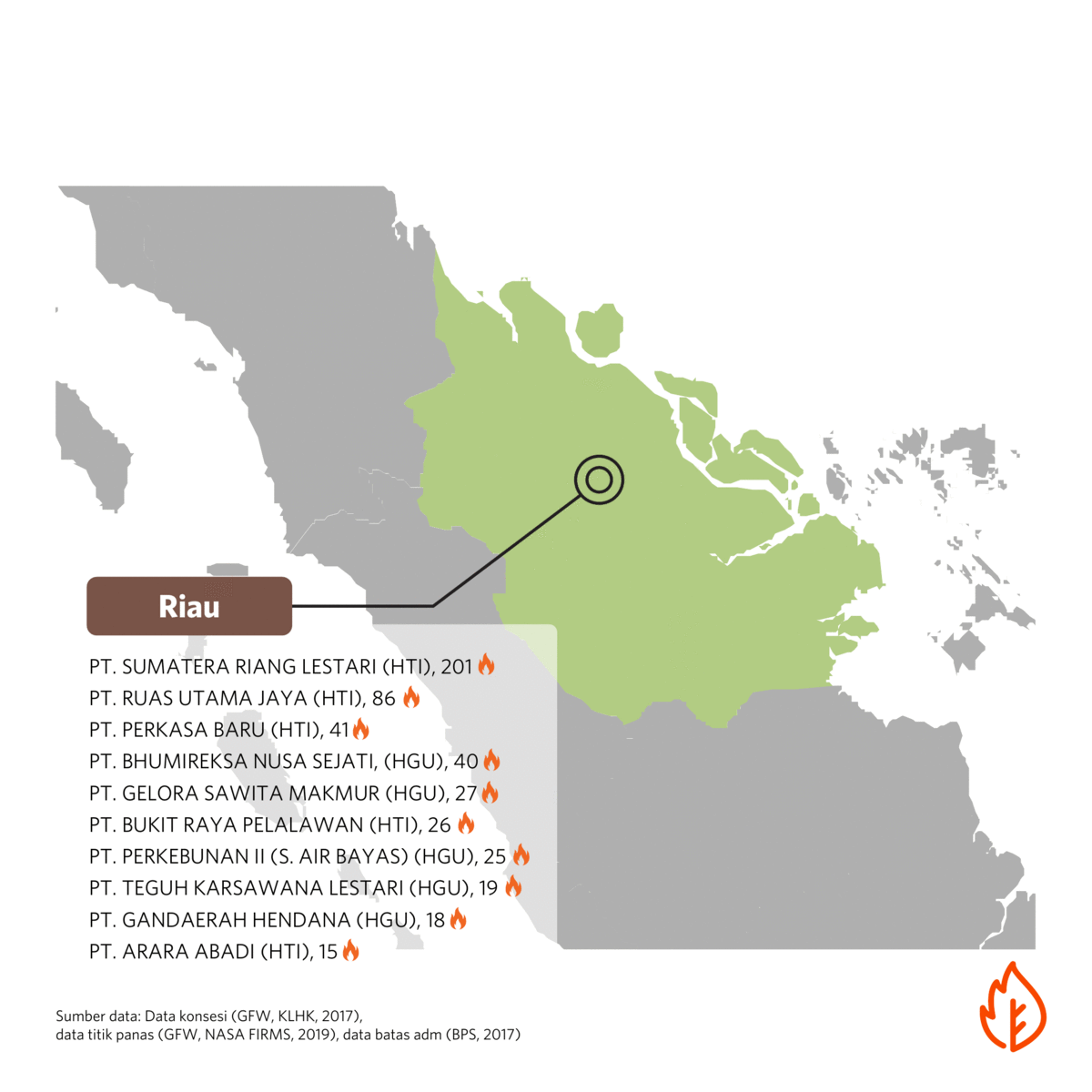Government Commitments to Peat Restoration in Papua Must Be Met
By Yohanes AkwanQuestioning the Root Cause of Peat Fires in Concession Areas
Once again, the same six provinces have been put on emergency alert status for massive forest and land fire disasters: Riau, South Sumatra, Jambi, Central Kalimantan, West Kalimantan, and South Kalimantan. Thick haze caused by the land and forest fires not only hinders visibility, but also threatens the safety of residents and limits their daily activities outdoors.
The smog also paints the sky amber and red. According to Siswanto, Head of Climate and Air Quality Information Production at the Meteorology, Climatology, and Geophysics Agency (BMKG), the red sky phenomenon was caused by very high concentration of dominant PM10 pollutant dust measuring at 0.7 micrometers or more across very large areas.
Data from the Ministry of Environment and Forestry shows a nearly 500% increase in PM10 pollutant in the provinces of Central Kalimantan, Jambi, and Riau between 1 July-30 September 2019, placing the three provinces in the “Very Dangerous” category (>400 μg/m3). This figure far exceeds the Threshold Value (NAV) of PM10 that is allowed in Indonesia, which is 150 μg/m3. Furthermore, if we refer to air quality instructions from the World Health Organization (WHO), the PM10 figure is in fact very far from what is allowed, which is 20 μg/m3 (average per year) or 50 g/m3 (average per 24 hours).
“Very Dangerous” category (>400 g/m3) indicates a level of air quality that is dangerous for everyone and requires immediate evacuation to a place or space free of air pollution, especially for people at risk, including toddlers, pregnant women, the elderly, and people with respiratory problems.
Smoke haze from the fire and circulated in the air has various negative impacts on health. Polluted air quality can cause deterioration of the body’s condition, irritation of the respiratory tract, and increased symptoms in patients with certain diseases, including triggering Acute Respiratory Infections (ARI).
Data from the Ministry of Health presented by the National Disaster Management Agency (BNPB) shows that 919,516 people living in the six provinces on emergency alert for forest and land fires suffer from ARI caused by the fires. This number will continue to increase as the dry season is expected to last until November 2019. From a medical standpoint, ARI is not sensitive to a certain season, since the infection can occur any time. However, trigger factors can increase the risk of infection, such as distribution of harmful particulate matter from land and forest fires, which greatly affect the quality of the air that people breathe.
Pantau Gambut analyzed the distribution of hot spots captured by the VIIRS sensor with a high level of confidence in seven priority provinces for peat restoration. Hot spots were found on peatlands located in concession areas throughout the seven provinces. In fact, the distribution of hot spots in concession areas in Papua has increased compared to 2016-2018. This should be addressed by enhancing prevention efforts and tightening security in areas prone to fires, considering that concessions in peatlands are still being granted to companies despite the government’s stated commitment for peat protection. Without increased supervision, it is not impossible that Papua will suffer the same fate as Kalimantan and Sumatra.
By regulation, line ministries for the environment, forestry, and agriculture have issued orders to reduce the potential for fires, including Regulation of the Minister of Agriculture No. 5 of 2018, which prohibits burning activities in land clearing and management, and Circular Letter of the Minister of Environment and Forestry in 2015 which authorizes efforts to secure concession areas from potential forest fires. In fact, the President of Indonesia has issued Government Regulation No. 57 of 2016 in conjunction with Government Regulation No. 71 of 2014 concerning the Protection and Management of Peatlands, which outlines the prohibition of peat burning and directives for restoration in damaged peat areas.
The ultimate legal basis when it comes to law enforcement for forest and land burning perpetrators has been established in 3 cross-sectoral National Laws. The first is Article 78 Paragraph (3) of Law No. 41 of 1999 (Forestry Law), which states that forest fire perpetrators are subject to a 15-year prison sentence and a maximum fine of IDR 5 billion. Second, Article 8 Paragraph (1) of Law No. 18 of 2004 (Plantation Law) states that if anyone who intentionally committed land clearing by burning is subject to a 10-year prison sentence and a maximum fine of IDR 10 billion. Finally, Article 108 of Law Number 32 of 2009 (Environmental Protection and Management Law) stipulates that anyone who intentionally committed land clearing by burning is subject to a minimum of three years and a maximum of 10 years in prison, as well as a maximum fine of IDR 10 billion.
Repeated fires in licensed cultivation areas have raised questions about the company’s compliance with regulations for protecting peat ecosystems, especially on preventing damage to peat ecosystems due to land fires. It seems that these regulations only work on paper and lacking any actual implementation.
Law enforcement against companies with repeated fire cases in their concession areas needs to be improved, considering that cases like these seem to often get lost in the haze. In the case of PT Sumatera Riang Lestari in Riau, for instance, where fire happens every year in the concession area, it seems that no fire prevention measures have been taken by the company, and no legal action serving as deterrence effect.
This begs the question as to the real root cause of forest fires that keep recurring in concession areas: is it lack of clear regulations, or is it poor law enforcement?




